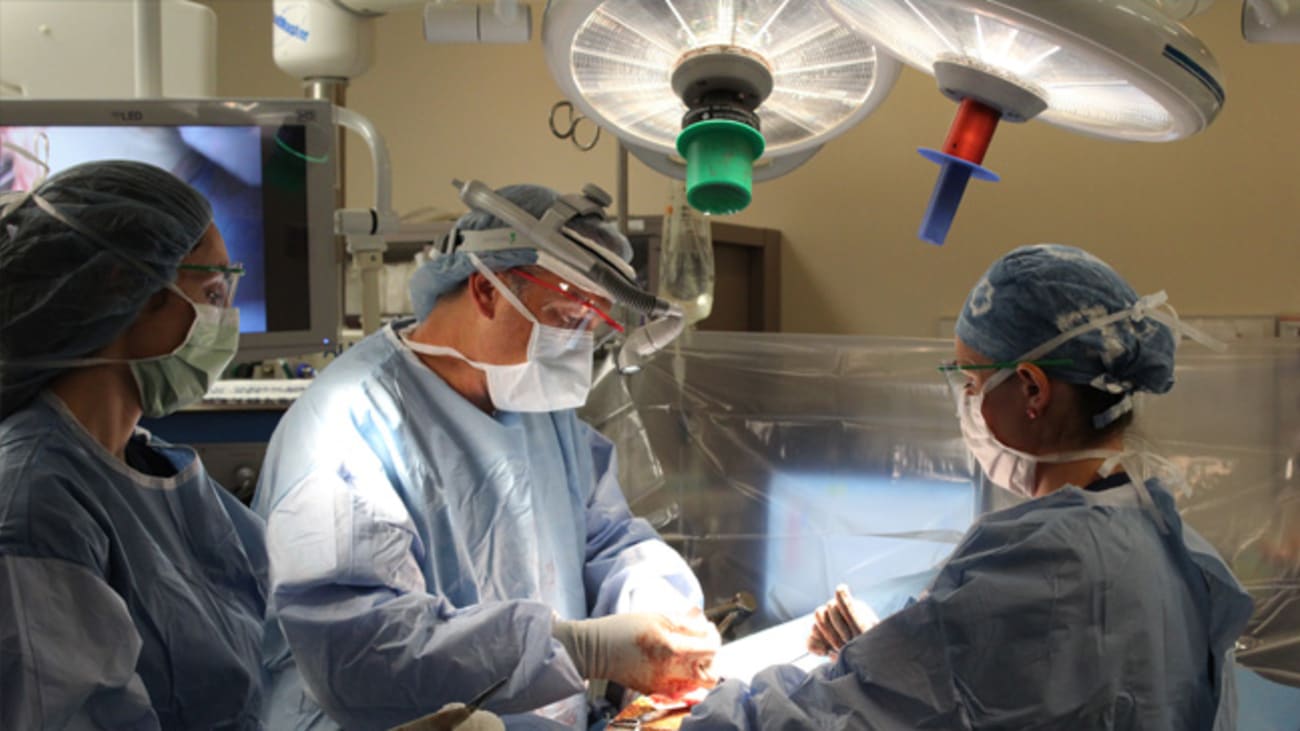
By stabilizing fractured and partially dislocated ribs, physicians can improve patient quality of life
When an arm snaps, a leg cracks or a wrist twists, physicians set the bone to ensure it heals properly and with as little discomfort to the patient as possible. But the same cannot be said for most rib fractures.
Past practice and teaching call for little to no treatment, even if it takes months for the patient to breathe normally or just get back to work. The prevailing wisdom has been succinct. “Offer medicine for the pain and a ventilator if breathing is an issue,” said Evert Eriksson, M.D., a trauma surgeon at MUSC. “But otherwise, the bone will form a callus over time that allows it to function.”
And while that idea has morphed over the last decade to make multiple-fracture repair more common, patients with less severe fractures often still go untreated despite pain.
This extended discomfort is what led Eriksson to join eleven other national centers in evaluating the success of surgical stabilization of rib fractures (SSRF), which involves installing a plate to line up the two ends of the fracture and hold them in place through- out the healing process.
As recently published in the Journal of Trauma and Acute Care Surgery, patients who underwent SSRF for three or more rib fractures with partial dislocation reported less pain on the numeric pain scale and a better quality of life after their stabilization surgery.
“This research shows that patients who have partially displaced fractures as well as some pulmonary compromise also benefit from a procedure that is generally reserved for a more severely injured cohort,” said Eriksson.
Technological limitations have played a role in keeping surgeons from performing this procedure in the past. It wasn’t until recently that surgeons acquired the right equipment to keep surgical incisions small and the risk of complications in the pleural space low. By pulling the muscles aside, instead of cutting through them, surgeons are able to access the chest wall and ribs less invasively. Even the material of the stabilization plates has improved, becoming less rigid and moving more naturally with the patient as the chest expands and contracts with each breath, according to Eriksson.
While the level of narcotic use did not change significantly in patients who received SSRF, these patients consistently reported more comfort and less pain at each interview interval than those who had not undergone the operation. The fractured ribs took just as long to completely heal, but the patients’ experiences during this process were far superior, and they reported feeling less pain and easier breathing throughout.
Patients also experienced fewer complications from their rib fractures. By opening the chest, addressing any additional injuries, guiding the bones back into position and removing any excess blood from the area, surgeons decreased the chances that study participants would have any additional bleeding or fluid accumulation in that space.
Next, Eriksson wants to look at other bones that are not treated surgically. “I had a patient from this study come to me and say, ‘My chest no longer hurts. You fixed that. But now it’s my shoulder that’s the problem.’”
